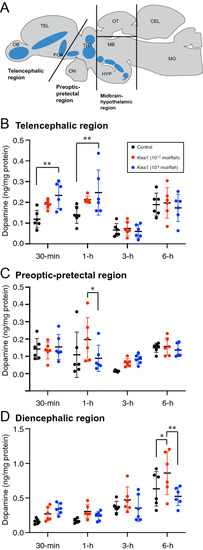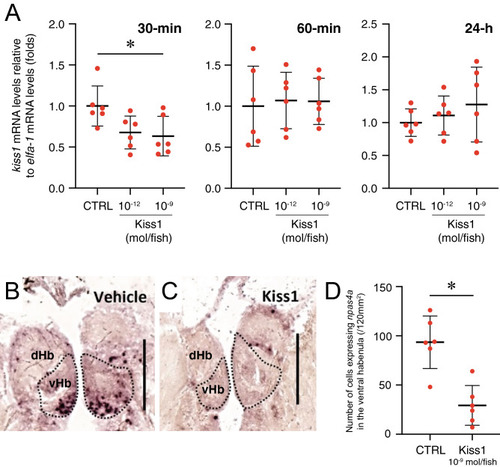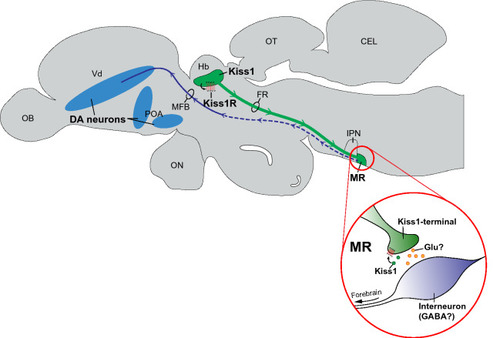- Title
-
Kisspeptin-1 regulates forebrain dopaminergic neurons in the zebrafish
- Authors
- Abdul Satar, N.M., Ogawa, S., Parhar, I.S.
- Source
- Full text @ Sci. Rep.
|
Effect of Kiss1 treatment on expression of dopamine-related genes. ( |
|
Effect of Kiss1 on the expression of dopamine-related genes in different brain regions. ( |
|
Effect of Kiss1 on dopamine levels in different brain regions. ( |
|
Effect of Kiss1 on the habenula activity. ( |
|
Expression of |
|
Neural tracer application into the median raphe. ( |
|
Tracer-labelled neuronal projection from the median raphe. ( |
|
Schematic drawing illustrating putative connection from the habenula Kiss1 towards telencephalic dopaminergic neurons in the brain of zebrafish. Habenula Kiss1 neurons send projection and terminate at the median raphe (MR) through the fasciculus retroflexus (FR). Habenula Kiss1 neuronal activity is controlled by autocrine feedback of Kiss1 via co-expressing Kiss1R. At the MR, inhibition of Kiss1 neurons may influence on postsynaptic glutamatergic (Glu) transmission on interneurons such as GABAergic neurons (in red circle). Neurons receive Kiss1 inputs within the MR further send projections towards the telencephalon via the medial forebrain bundle (MFB) and possibly act on the telencephalic dopaminergic (DA) cells. |








